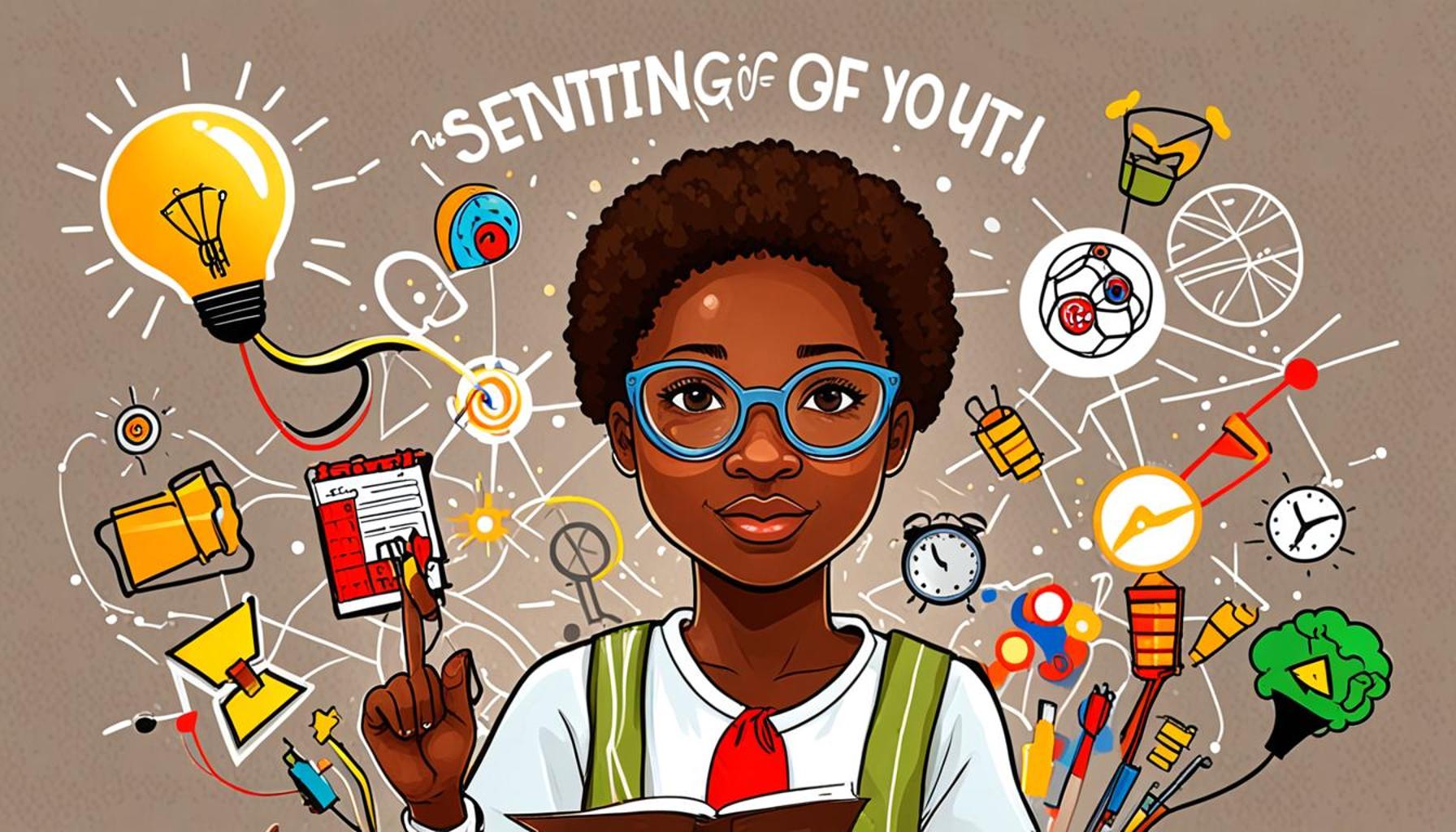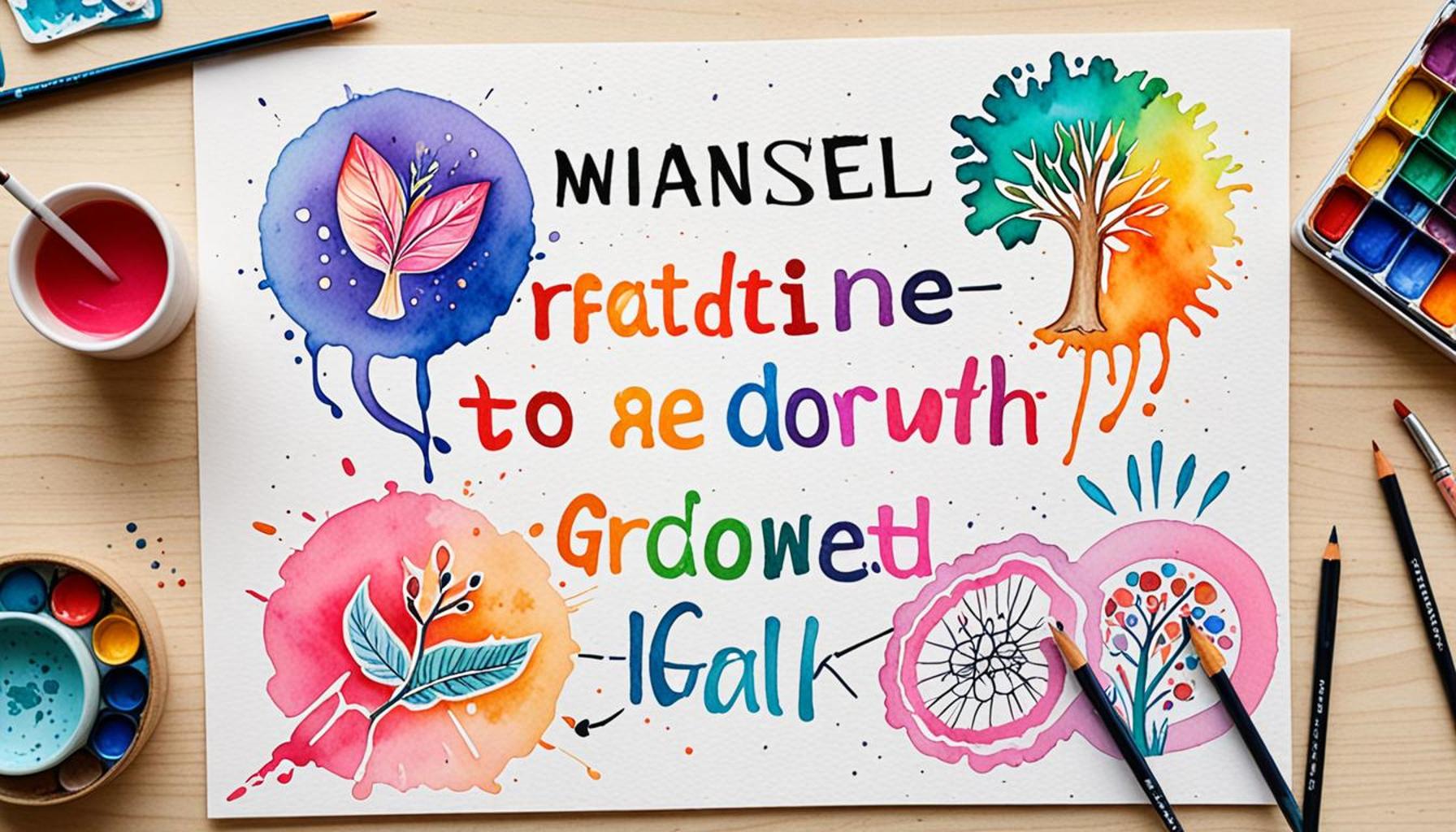How Goal Visualization Can Boost Resilience and Motivation in Nigerian Students

Unlocking Potential through Effective Strategies
In the fast-paced educational landscape of Nigeria, where academic pressures can be immense, especially in urban centers like Lagos and Ibadan, resilience and motivation are crucial components that determine a student’s success. With constant demands from both academic institutions and societal expectations, it becomes imperative to equip young learners with effective techniques that can enhance their mental strength and overall performance. One technique that has recently gained significant traction is goal visualization.
Goal visualization is not merely a practice of daydreaming; it is a focused mental rehearsal that involves vividly picturing oneself achieving specific objectives. This method can serve as a powerful catalyst for students. By harnessing their creativity and imagination, Nigerian students can:
- Boost their motivation to pursue academic excellence. When students visualize themselves completing a challenging exam or earning a scholarship, they create a compelling reason to stay focused and dedicated.
- Strengthen their resilience in the face of challenges. Visualizing success equips students with the mental tools to cope with setbacks, such as poor grades or difficult subjects, enabling them to bounce back and keep pushing forward.
- Enhance their focus, allowing them to prioritize tasks effectively. By imagining the end goals, students can determine which actions lead them closer to their aspirations and eliminate distractions that deter progress.
Numerous studies have highlighted that individuals who engage in goal visualization often display higher determination and persistence. In Nigeria, many secondary school students are beginning to incorporate this practice into their daily study routines. For instance, students in preparation for the West African Senior School Certificate Examination (WASSCE) may spend time each morning visualizing themselves confidently answering questions and achieving high scores. This active mental engagement nurtures a sense of ownership and commitment to their academic journey.
Throughout this article, we will explore how the art of goal visualization can significantly influence both resilience and motivation in Nigerian students. We will look at practical tips that can be easily integrated into daily life, such as setting clear and achievable goals, creating vision boards, and practicing mindfulness techniques that enhance mental imagery. Additionally, real-life examples of students from various backgrounds who have successfully implemented these strategies will demonstrate the transformative power that visualization holds.
Students, educators, and parents alike stand to gain invaluable insights from adopting a visualizing mindset. By fostering this innovative approach, we can pave the way for a more motivated, resilient, and ultimately successful generation of learners in Nigeria.

LEARN MORE: This related article may interest you
Understanding the Power of Goal Visualization
Goal visualization has emerged as a transformative practice that can redefine the academic experience for Nigerian students. This technique involves more than just wishing or dreaming; it’s about actively picturing oneself reaching a desired educational milestone. The importance of goal visualization cannot be understated, especially in a landscape where academic challenges are rife. Research indicates that when students engage in this focused mental imagery, they often exhibit a significant boost in motivation and resilience.
In a country where educational competition from peers is fierce, particularly in bustling cities, the capacity to visualize goals becomes a vital tool. Take, for instance, the experience of students preparing for entrance exams into higher institutions. By setting clear goals and visualizing the various stages of their journey—such as studying diligently, understanding complex topics, and the thrill of receiving admission letters—they create a blueprint for success. This mental exercise fuels their resolve to overcome obstacles and remain committed to their studies.
Students can derive countless benefits from adopting goal visualization into their daily routines. Here are a few key advantages:
- Increased Clarity: Visualization helps students articulate their aspirations. By picturing their end goal, such as excelling in the Unified Tertiary Matriculation Examination (UTME), they can delineate the specific steps they need to take.
- Heightened Emotional Connection: Imagining the emotions associated with achieving their goals fosters a deeper commitment. Students feel more engaged and connected to their aspirations, making them less likely to give up when challenges arise.
- Improved Stress Management: By training their minds to visualize success, students may find themselves better equipped to handle stress and anxiety, particularly in intense examination periods. This effective mental rehearsal can enhance their overall well-being.
Real-world examples reflect the profound impact of visualization on Nigerian students. For instance, consider Chijioke, a final-year student from Enugu who struggled with mathematics. By regularly visualizing himself solving complicated problems and successfully passing his examinations, he built confidence and ultimately turned his grades around. His story demonstrates that goal visualization is not simply a mental exercise but a catalyst for real change.
As the educational landscape in Nigeria continues to evolve, the significance of developing mental strategies like goal visualization is becoming increasingly prominent. Students who can effectively picture their paths to success may not only excel academically but may also cultivate essential skills that contribute to their resilience in life beyond the classroom. This approach provides an opportunity for students to seize control of their academic journeys, fostering a generation of learners who are prepared to tackle challenges with tenacity and focus.
Many students face unique challenges in their educational journeys, particularly in Nigeria where societal and economic pressures can hinder growth. However, the power of goal visualization serves as a transformative tool that can play a pivotal role in enhancing resilience and motivation. By vividly imagining their desired futures, students can harness the mental power of positive imagery to shape their behaviors and responses to setbacks.Research indicates that when individuals visualize their goals, they create a mental roadmap that aids in overcoming obstacles. For Nigerian students, this means developing an unwavering focus on their aspirations despite external challenges. Visualization techniques can lead to improved self-esteem and a more profound sense of purpose, crucial elements in building resilience.Moreover, goal visualization can significantly enhance motivation by fostering a clearer understanding of the steps required to achieve specific outcomes. For students grappling with insufficient resources or familial pressures, this technique can ignite a fire within, pushing them towards their academic and personal goals with greater determination. As they see themselves succeeding mentally, they become more inclined to take the necessary actions in reality, further emphasizing the importance of this practice.Integrating goal visualization into daily routines can also help students identify potential roadblocks and devise strategies to tackle them. By mentally rehearsing scenarios they may encounter, students prepare themselves to stay resilient rather than wilt under pressure. Ultimately, the consistent practice of visualization can enhance emotional intelligence, making it easier for students to navigate the ups and downs of academic life while remaining steadfast in their pursuits.
RECOMMENDED: Check out this similar article
The Science Behind Goal Visualization and its Impact on Academic Performance
While the anecdotes are convincing, the scientific backing for
goal visualization further strengthens its importance for Nigerian students. Research in psychology reveals that the brain processes visual stimuli quicker than verbal information, making visualization a potent tool for learning and motivation. This rapid processing aids in memory retention and comprehension, fostering an environment where students can maximize their academic potential.
One critical aspect of visualization is the principle of neuroplasticity. This suggests that our brains can change and adapt throughout our lives. By consistently visualizing their success, students are effectively training their minds to reinforce neural pathways associated with achieving their goals. As a result, visualizing success not only makes the aspiration feel more attainable but it also enhances their overall cognitive abilities, enabling them to perform better in rigorous academic settings.
In Nigeria, where many students face a lack of resources and support, leveraging mental imagery can help in counteracting challenges. For instance, a student aiming to score high in the Senior Secondary Certificate Examination (SSCE) can visualize the study habits, focus, and discipline needed to reach their target. This daydreaming can translate into reality as it fosters a growth mindset—that failure is not an endpoint but rather a stepping stone towards success. Studies show that students who adopt a growth mindset are more resilient and better able to cope with setbacks.
Additionally, cultural factors in Nigeria can play a significant role in how students perceive their academic journeys. Many students are influenced by their backgrounds, where success is often tied to societal expectations and family pride. Visualization can transform these pressures into positive energy, as students visualize not just their academic goals but the joy and pride their families would feel. A student from Lagos, for example, may imagine the happiness on their parents’ faces when they achieve their ambition of entering a prestigious university, which reinforces their determination and resilience.
Moreover, incorporating goal visualization into group settings can amplify its effects. Collaborative visualization exercises, such as those conducted in study groups or mentorship programs, provide an opportunity for peer motivation and support. Students can share their goals and visualize outcomes together, creating a community rooted in mutual encouragement. These collective aspirations can further solidify individual commitments and inspire resilience in the face of academic challenges.
The implementation of goal visualization doesn’t necessitate elaborate strategies; simple practices can be incredibly effective. Students can create vision boards filled with images, quotes, and symbols representing their academic dreams. They can also engage in regular meditation sessions that allow them to imagine their paths to success clearly. Engaging in daily affirmations while visualizing their goals can significantly enhance their self-efficacy and determination.
As the educational environment becomes more competitive, it is crucial for Nigerian students to harness tools that can bolster their motivation and resilience. By employing techniques such as goal visualization, students can not only navigate the challenges of academia but also develop a sense of control over their futures—one vivid picture at a time.
ADDITIONAL INSIGHTS: Expand your understanding here
Conclusion: Unlocking Potential Through Visualization
In the dynamic landscape of education, where Nigerian students are often faced with numerous challenges, the practice of goal visualization emerges as a transformative tool. By creating vivid mental images of their aspirations, students not only clarify their academic objectives but also develop resilience in the face of adversity. The connection between visualization, neuroplasticity, and effective learning becomes increasingly evident, as students harness their thoughts to forge pathways toward success.
As highlighted throughout this article, goal visualization empowers students to maintain motivation, particularly in a culturally rich setting where family pride and societal expectations can be both a source of pressure and inspiration. Students can channel these emotions into constructive energy through visualization, allowing them to envision and manifest their academic dreams. Engaging in communal practices, such as group visualization exercises, further bolsters resilience by fostering a supportive network among peers.
Looking ahead, it is vital for educational policymakers, teachers, and parents to advocate for the integration of goal visualization exercises into the curriculum. Simple practices—be it vision boards, meditation, or daily affirmations—should be encouraged as vital components of a holistic approach to education. By prioritizing these techniques, Nigerian students can not only enhance their academic performance but also cultivate a robust mindset that is resilient and adaptable.
In conclusion, the power of visualization extends beyond mere academic achievement; it shapes students’ futures, instills confidence, and inspires them to dream bigger. Through this lens, we can envision a generation of resilient and motivated learners, ready to conquer any challenge that comes their way.


